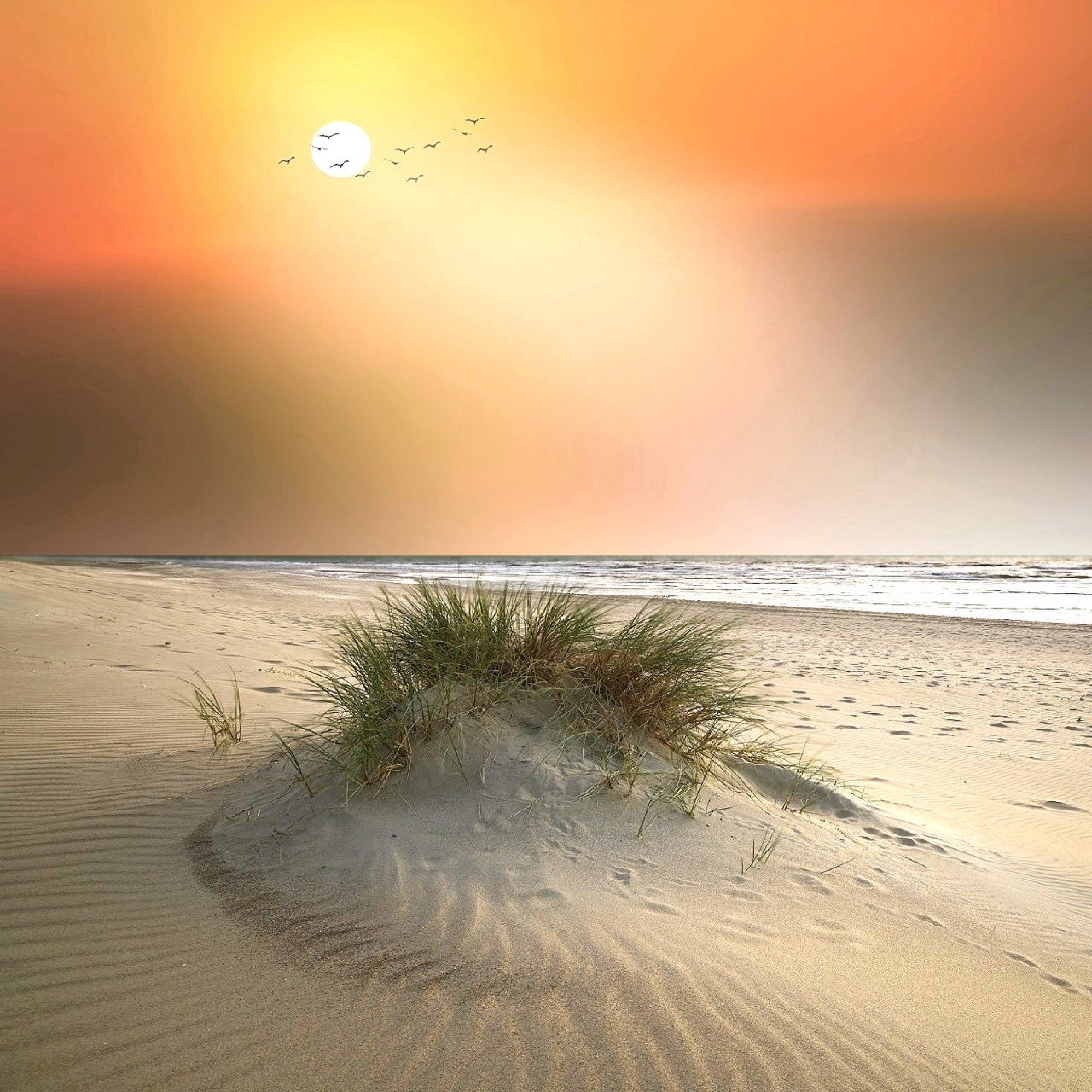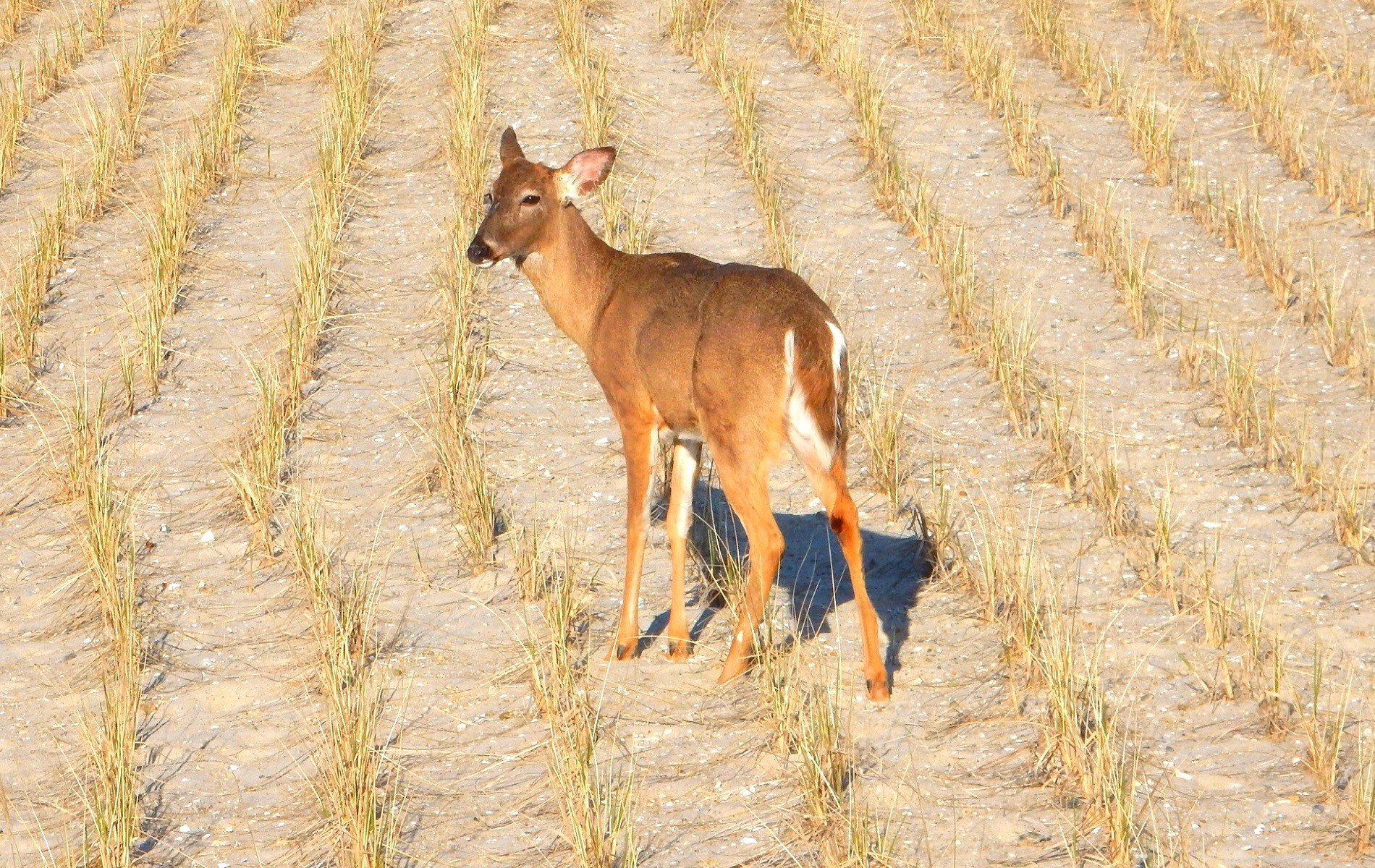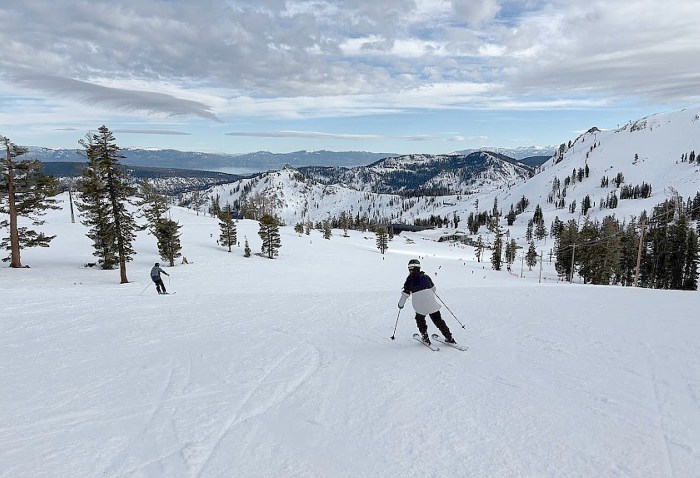Welcome Back!
What a weird winter … We had virtually no snow but wild fluctuations in temperature, from a low of 4 F in January to a high of 72 F in mid-February! And along the way we got whacked by two nasty nor’easters.
Those storms got me thinking about the importance of beach grass. At first glance it seems just too flimsy to protect much of anything, right?
Wrong. Turns out these amazing plants are the single biggest factor in maintaining the strength and integrity of both the natural sand dunes and man-made berms that protect every town on Fire Island. Had the berms not been there those storms would have caused considerable damage throughout the island. As it was, the dunes took the hit.
The visible bits – the green leaves – capture the sun’s energy to nurture the roots, called rhizomes (or creeping rootstalks, or just rootstalks). Rhizomes grow horizontally beneath the sand and create new shoots that grow upwards. They take a few years to become established, after which they spread with remarkable speed during growing season, covering two or three new square yards in a single summer. Along the way they grow countless millions of small hair-like roots that lock countless sand particles in place. Ounce-for-ounce most of the plant grows invisibly beneath the sand.
In addition to photosynthesis, the leaves also trap windblown sand. As it gains height the roots grow thicker and the stalks push upward to remain in the sun. Dune fencing at the seaward base of the dunes traps even more sand, as you can see in the photographs. And that causes the leaves to shoot up further still, thickening the rhizome layer and trapping yet more sand.

The accompanying photograph shows just how effective it is at retaining the sand when it’s assaulted by wind and waves. It’s amazingly strong.

There are two major species, each with several variants. In the United States Ammophila Breviligulata (American Beach Grass) occurs naturally through most of New England and ranges as far south as the Carolinas. This is what’s planted on our dunes.
The other major species, Ammophila Arenaria, has been planted to stabilize dunes way beyond its original European origins, including Australia, New Zealand, South Africa, Argentina and Chile. For the most part it has been very effective.
Legislation promoting dune stabilization by various means including grass plantings dates all the way back to 1779 in both the UK and the United States. That’s how long people have understood what a clever idea it is. But it must be done with care. For example, in the 19th century American beach grass was introduced on the Pacific coast with massive plantings that continued through 1960. But ironically, on the west coast it’s now considered invasive, and costly efforts are underway to eradicate it. This illustrates just how complex natural systems are and the need to study them in depth before good intentions go wrong.
Did you know that certain variants are edible? For example, Inuit in Canada have traditionally used it to treat stomach problems. But of course, please don’t, today we have much more effective medications and far more tasty salad ingredients.
Human habitation causes indirect destruction. If you take a broad look along the island one thing jumps right out – the dunes in the national seashore areas between the communities are dramatically more robust than in front of the houses. We don’t mean to do it, of course, but the fact is that human habitation has a corrosive effect. This is why legal protection is so vital. Unfortunately, some people think that applies only to fenced-in areas.

That’s not true. Walking on any beach grass, whether fenced or not, can cause great harm. When you step on the grass it appears to bend and spring back after you pass, but what you don’t see is that each footstep snaps the delicate connection between the leaves and the root just under the sand. That cuts off the energy supply to the root system and the plant dies. Deer also walk through the grass, but they instinctively don’t step in the wrong places, and with twice as many feet their weight is better distributed.
So respect the beach grass – and stay off the dunes.

























